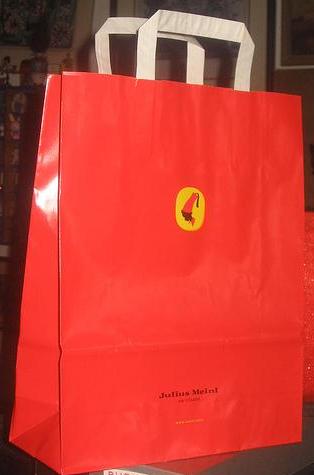Ilse Zolle
(1931-2009)
|
| On May 8th
2009, my boss Werner Sieghart discovered the announcement of the
Medical University Vienna that Ilse Zolle passed away unexpectedly on
April 8th. This fact was of some
importance to both of us, since a collaborative paper was in the
process of revision for Bioorganic & Medicinal Chemistry
Letters (Atucha et al 2009), and we've been waiting - with
considerable uneasiness
- for her overdue comments. |
| This
uneasiness resulted from her less than helpful comments delivered
during the writing of the manuscript and from my rather harmful
experiences during the preparation of our last
publication (Zolle et al 2008). Therefore, I received
the notice of her sudden death with mixed feelings. On one hand, I felt
relief, since now we could proceed with the publication of our data
without any further quarrel and delay. On the other hand, I felt moved
and bewildered to an extent, that came as a surprise to me. |
| Why should
I moan the death of this person? She was ruthless and stubborn, wasted
my time over the years with endless discussions on trivial scientific
problems, was not acquainted with the basic rules of
scientific conduct, and did not hesitate to intervene at the highest
level, if I didn't act in the way she wanted me to act. |
| Our first
contact dates back to the year 1990 when she needed advice with the
binding of a radioligand custom-labelled with tritium by Amersham in
1984. Although this binding site (concerning an enzyme in the adrenals)
was far off my main interests, I agreed to advise her methodically. My
first trouble was to explain to her that the binding of a radioligand
was not quantified by measuring the loss of radioactivity in the
supernatant after centrifugation, but the gain of radioactivity in the
particulate fraction. This hardship was alleviated by the charming
character of her student Jie Yu from China. |
| After more
than 3 years, Jie Yu (we called her Julia) finished her thesis and
returned to her family in China in 1994. Ilse Zolle was furious. Over
the years, Julia had become her technical assistant and personal
secretary, keeping things going in the lab, and Zolle was hoping that
she would stay. She didn't hesitate to accuse me of having written
large parts of Julia's thesis and even wrote a letter to my boss
(Hornykiewicz at that time). This led to a first hiatus in our
relationship, lasting for some years. |
| I was
recontacted by Ilse Zolle in 2000, bringing along another charming
student (Martina Netter) and a new radioligand, this time labelled with
Technetium (her central expertise: Zolle 2006). Again, I had a hard
time explaining that autoradiographs showing nice labelling of the
adrenal cortex were without meaning, if no difference was seen between
total and non-specific binding. In addition, it soon turned out that
the technetium with its complexing residues was too bulky as a
substituent at this position of the ligand molecule and led to a total
loss of binding affinity. |
| In amazing
persistence, Zolle soon arrived with a third radioligand, this time not
accompanied by another charming student but supported by my colleague
from student days, Friedrich Hammerschmidt (Organic Chemistry,
University Vienna). This ligand was labelled by
iodine-131, had to be handled behind a wall of lead, and was
of real high affinity. After completion of the data by in vitro
endocrinology in cooperation with colleagues in Würzburg, Zolle
objected against a first manuscript version prepared by myself
and
submitted in spring 2007 her own version to JMC without sharing it with
her coauthors. We soon
found out, why. |
| When - to
our big surprise - the editor of the
JMC signalled he would accept the paper for publication, provided we
would apply some minor revisions, we insisted to see the submitted and
the revised version. We succeeded only after having asked the Dean of
the Life Sciences Faculty for help (at that time Christian Noe), who
applied massive pressure upon Zolle. Only then we discovered that Zolle
had changed the data to her taste. And she did not apologize for having
done so, on the contrary: she attacked us furiously and claimed that
she as the corresponding author and project leader had the right to do
so. |
| Ilse
Zolle had even the hubris
to contact the directors of my institution (Sandkühler) and of the
Endocrinology Lab in Würzburg (Allolio), and asked them to discipline
their subordinates. It finally took explicit letters of
all coauthors to the editor of the JMC to force her to submit
a
consensual
final version of the manuscript, with the true data (and not with the
fabricated ones). It appears still as a miracle to me that this paper
appeared in print. |
| Often in the early evening,
like now, unexpectedly the department's bell rang. Behind the ribbed
glass of our department's door, the silhouette of a figure carrying an
unmistakably red Julius-Meinl bag made its appearance. The
"Julius-Meinl" at the Graben in the first district was her favorite
shop;
from there, she often brought some snacks with her ("You got to eat
something!"). Maybe now, I miss these snacks? Maybe I regret
that she will not procure any further charming students for me? For
some unexplainable reason, I already miss her. |
4/09 < MB
(5/09) > 6/09
|
 |
| Atucha
E, Hammerschmidt F, Zolle I, Sieghart W, Berger ML (2009)
Structure-activity relationship of etomidate derivatives at the GABAA
receptor: comparison with binding to 11ß-
hydroxylase.Bioorg Med Chem Lett 19:4284-87. |
| Ilse
Zolle (Ed., 2006) Technetium-99m Pharmaceuticals: Preparation and
Quality Control in Nuclear Medicine.Springer 2006. |
| Zolle
IM, Berger ML, Hammerschmidt F, Hahner S, Schirbel A,
Peric-Simov B (2008) New Selective Inhibitors of Steroid
11ß-Hydroxylation in the Adrenal Cortex. Synthesis and
Structure-Activity Relationship of Potent Etomidate Analogues. J Med Chem 51:2244-2253 |

